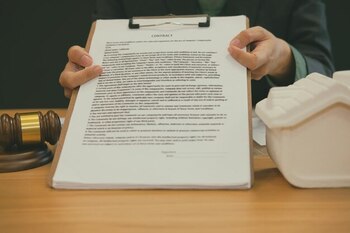Legal Rights in the Subleasing of Residential Spaces

In the rental world, subleasing residential spaces can be an attractive solution for both tenants and landlords. However, it is crucial to know the legal rights governing this practice in Costa Rica. From tenant protections to landlord obligations, understanding these aspects will not only prevent conflicts but also ensure a more pleasant housing experience. In this article, we will break down the key points about legal rights in subleasing and how to verify their proper application.
1. Concept of Subletting: Definitions and Types
Subletting is an agreement whereby a tenant (subtenant) leases part or all of the property they are renting to a third party. This type of contract can be beneficial in various situations, such as when the tenant needs to move temporarily or wants to share expenses. It is essential for both the landlord and the subtenant to understand the legal implications of this arrangement, as not all properties allow subletting and there may be specific conditions that must be adhered to according to the original lease agreement.
There are different types of subletting, which vary according to the needs and agreements between the parties involved. Total subletting implies that the tenant transfers all their rights over the property to the new occupant, while partial subletting allows the tenant to retain some use and control of the space. Furthermore, each modality carries its own responsibilities and legal rights, making it essential to carefully review any related contract to avoid future misunderstandings. Being well-informed about these differences will allow for proper management of the residential space and help maintain harmonious relationships among all involved.
2. Tenant Rights in a Sublease Agreement
The rights of the tenant in a sublease agreement are fundamental to ensuring a harmonious and equitable relationship between the parties involved. Firstly, the tenant has the right to enjoy the property without interruptions, which means that the landlord cannot evict them without valid justification. Furthermore, it is important for the tenant to be aware of the duration of the sublease agreement and the established conditions, as any changes must be agreed upon by both parties. This ensures that the tenant has the necessary security to plan their stay without unexpected surprises.
Another essential right is protection against unfair practices by the owner or original landlord. The tenant must be informed of any conditions that affect their sublease, as well as potential rent increases or changes in the rules of coexistence. Likewise, they have the right to request necessary repairs in the housing and to live in a safe and habitable environment. Knowing these rights is vital to empower the tenant and promote a culture of respect and responsibility within the legal framework of subleasing.
3. Legal Obligations of the Owner in the Event of a Sublease
The owner has several legal obligations that must be fulfilled when a sublease is carried out. First, it is essential that the owner gives written consent for the tenant to sublet the property. This agreement not only protects the owner's interests but also establishes the conditions and terms under which the subletting will be allowed. Without this consent, the tenant could be violating the clauses of the original contract, which could lead to penalties or even the termination of the lease agreement.
In addition to giving their approval, the owner must ensure that any subtenant complies with the rules and regulations established in the original contract. This includes aspects such as the duration of the sublease, the number of allowed occupants, and the guidelines regarding modifications to the property. Furthermore, it is the owner's responsibility to maintain open communication with all parties involved to address any issues or disputes that may arise during the duration of the sublease. Fulfilling these obligations not only helps avoid legal conflicts but also contributes to maintaining a harmonious environment in the housing.
4. Process to Verify the Legality of a Sublease Contract
To ensure the legality of a sublease agreement, it is essential to follow a methodical process that guarantees all terms and conditions are clear and properly documented. First, the original lease agreement should be reviewed to confirm that subletting is allowed. Many contracts include specific clauses regarding subleasing that may require the landlord's written consent. If this clause is present, it is advisable to obtain that permission before proceeding with any sublease agreement, as acting without this authorization may lead to legal disputes or the termination of the original contract.
Once the right to sublet has been confirmed, it is crucial to draft a new contract that details the terms agreed upon between the main tenant and the subtenant. This document should include information such as the duration of the sublease, the amount of rent, and the responsibilities of both parties regarding the maintenance and use of the space. Additionally, it is advisable to register this contract with a competent authority or to keep signed copies by both parties to avoid future misunderstandings. By following these steps, not only is the legality of the agreement ensured, but a transparent and respectful relationship among all parties involved is also fostered.
5. Essential Clauses in a Sublease Agreement
Essential clauses in a sublease agreement are fundamental to ensure that both the sublessor and the sublessee understand their rights and obligations. Among the most relevant is a detailed description of the space to be subleased, including its location, features, and any applicable restrictions. It is also vital to include the duration of the sublease, specifying start and end dates, as well as renewal terms if any. These clauses not only establish a clear framework for both parties but also help prevent misunderstandings or future disputes.
In addition to the above, the financial conditions must be explicitly stated in the agreement. This includes the amount of monthly rent, the method and date of payment, as well as any required security deposit and the conditions for its return at the end of the contract. It is also advisable to include clauses related to the maintenance of the property and who is responsible for repairs or damages during the subletting period. This way, both the original owner and the new tenant are protected, ensuring harmonious coexistence and avoiding unnecessary legal conflicts.
6. Legal Consequences of an Unauthorized Sublease
Unauthorized subletting can have serious legal consequences for the tenant who decides to take this route without the owner's consent. Firstly, the landlord has the right to terminate the original lease if they discover that a sublease has been made without their approval. This action could result in the loss of the home and the obligation to vacate the property immediately, which represents a significant complication for any tenant who depends on that space. Additionally, in some cases, the landlord may seek compensation for damages or losses associated with this act. On the other hand, the legal implications not only affect the tenant; they can also impact the subtenants. The latter group could face legal issues if it is determined that they are occupying a space without proper authorization. Although they may seem innocent in the transaction, the subtenants could be evicted and lose their investment in rent or security deposits. Therefore, it is essential for all parties involved to understand the rules and regulations regarding subletting and to ensure that they have all necessary permissions to avoid future conflicts.
7. Legal Resources for Resolving Conflicts in Subleases
Subleasing residential spaces can lead to various conflicts, both among tenants and between landlords. Knowing the legal resources available is essential for effectively resolving disputes. In many cases, tenants can turn to instances such as the Consumer Advocate or the Public Utilities Regulatory Authority, where they will receive advice on their rights and the actions they can take in case of non-compliance by the landlord or issues with the subtenant. This includes everything from mediations to formal complaints, depending on the severity of the conflict.
It is also important to mention that national laws establish specific procedures for resolving disputes related to subleases. Civil courts are a viable option if the parties do not reach an amicable agreement. Here, documentary evidence and testimonies supporting each position can be presented. Tenants and landlords must be prepared to demonstrate their compliance with the terms of the original contract and any applicable leasing legislation. Therefore, maintaining open and clear communication from the beginning can help prevent future conflicts and facilitate the swift resolution of any issues that arise during the subleasing.



